Birthday Reflection, and My Quest for Bobkitten: 9 Secrets on Photographing the Phantom of the Wild
I’m obsessed with bobcats.
I bet you are too, especially if you are a wildlife photographer.
After all, they are one of only three wild cat species in the U.S., together with the lynx and mountain lion. (Actually, a kind reader named John just corrected me. There's a fourth cat species. A jaguar has been sighted in Arizona!)
I have pretty much given up on the other ones. But if you have read my previous posts, you know I have attempted countless times to photograph wild bobcats all over the US.
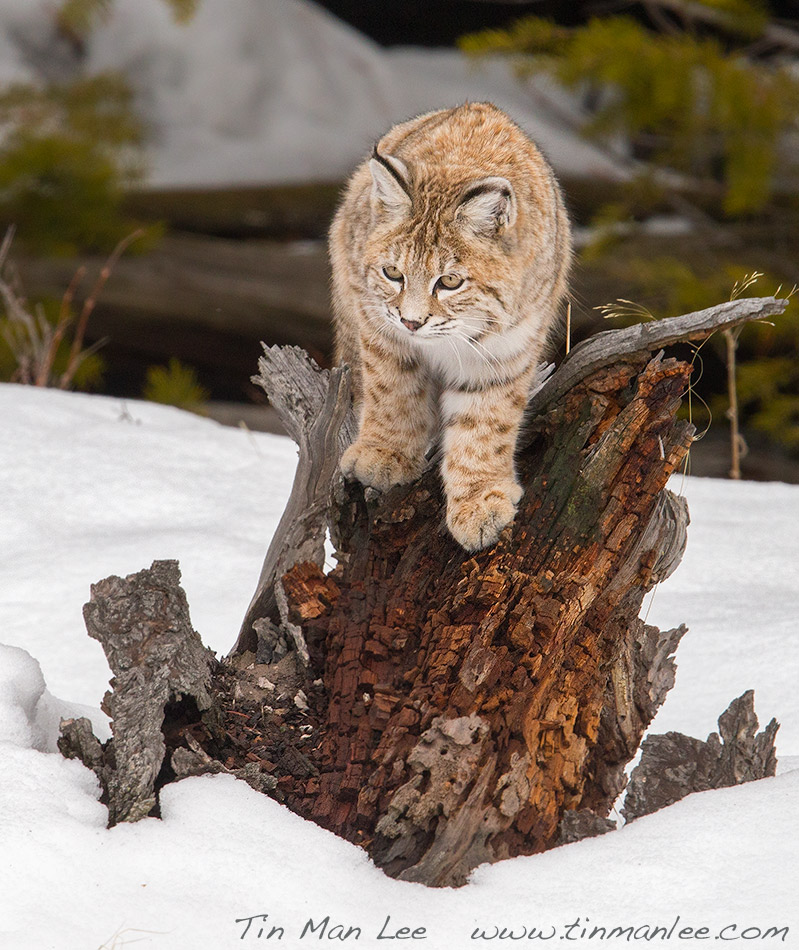
A few years ago, while trekking in three-foot-deep snow, I had the luck to see a bobcat in its winter coat at Yellowstone National Park, after looking for them for four winters. I couldn't believe my eyes when the bobcat climbed onto this stump.
Later that evening, we were blessed with gorgeous light.
Taken by Canon 1DX, 600mm f/4, 2x teleconverter, f/8, 1/800s, ISO 1600, RRS tripod.
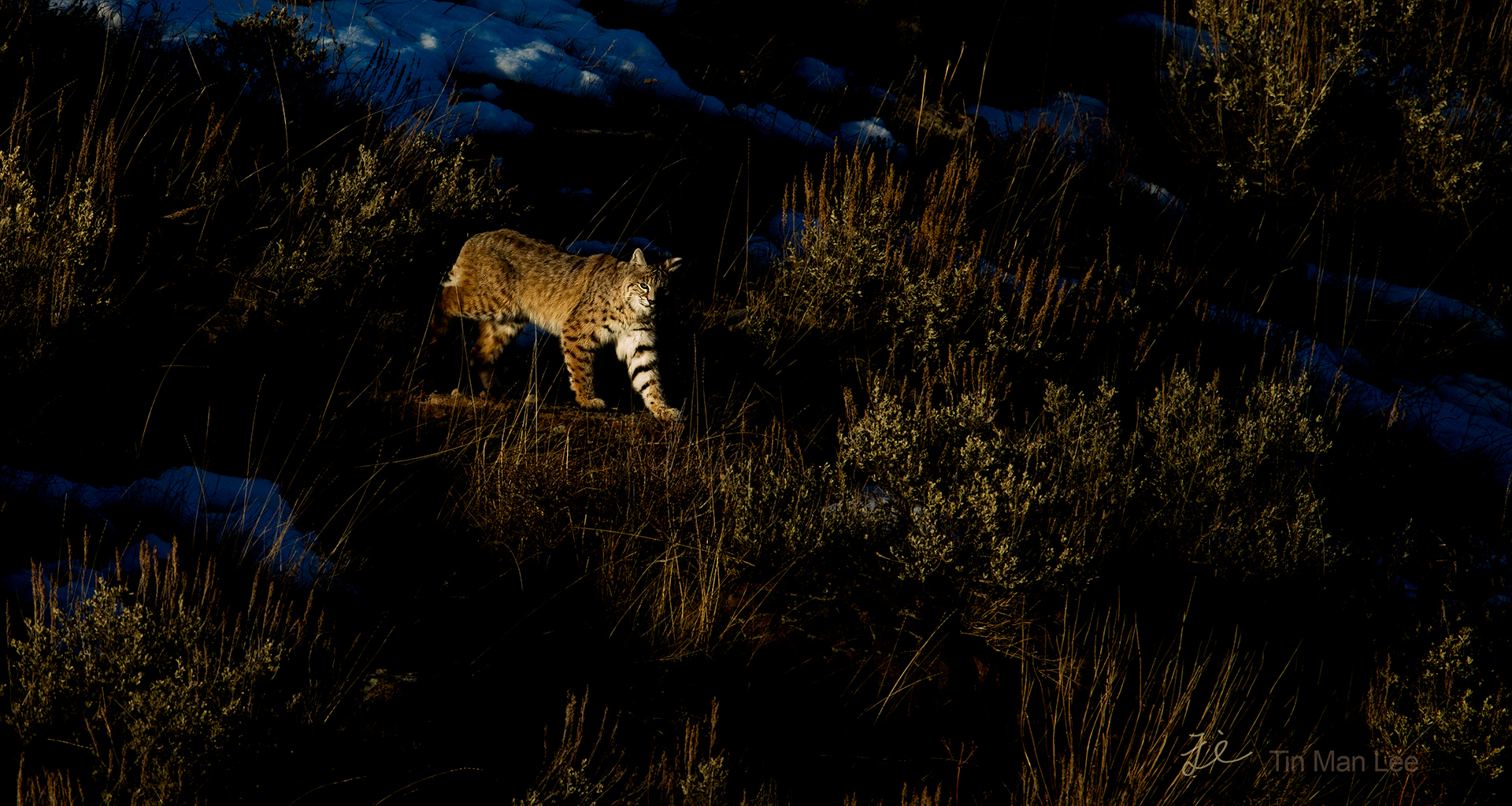
But in the deepest parts of my heart, I had yet another dream—to see a bobcat kitten, aka a bobkitten.
Bobkittens themselves deserve a whole new category, because they are just…IMPOSSIBLE to find.
They are beautiful, with stunning markings. They are super cute, and ultra-elusive.
I had done all kinds of research. Google. Online forums. You name it.
Yet most online photos were captive, baited, or from game farms. To me, those are not wildlife photos, so I had zero interest in them. I only wanted to see and photograph a wild bobkitten in its natural habitat, without using any bait.
Over the years, whenever I heard of any wild bobcat kitten sightings, I would drive for hours to try my luck---only to be disappointed.
The best sighting I had was some bobcat scat on the road.
Last year, I finally had my chance---but little did I know how difficult it would be. And painful.
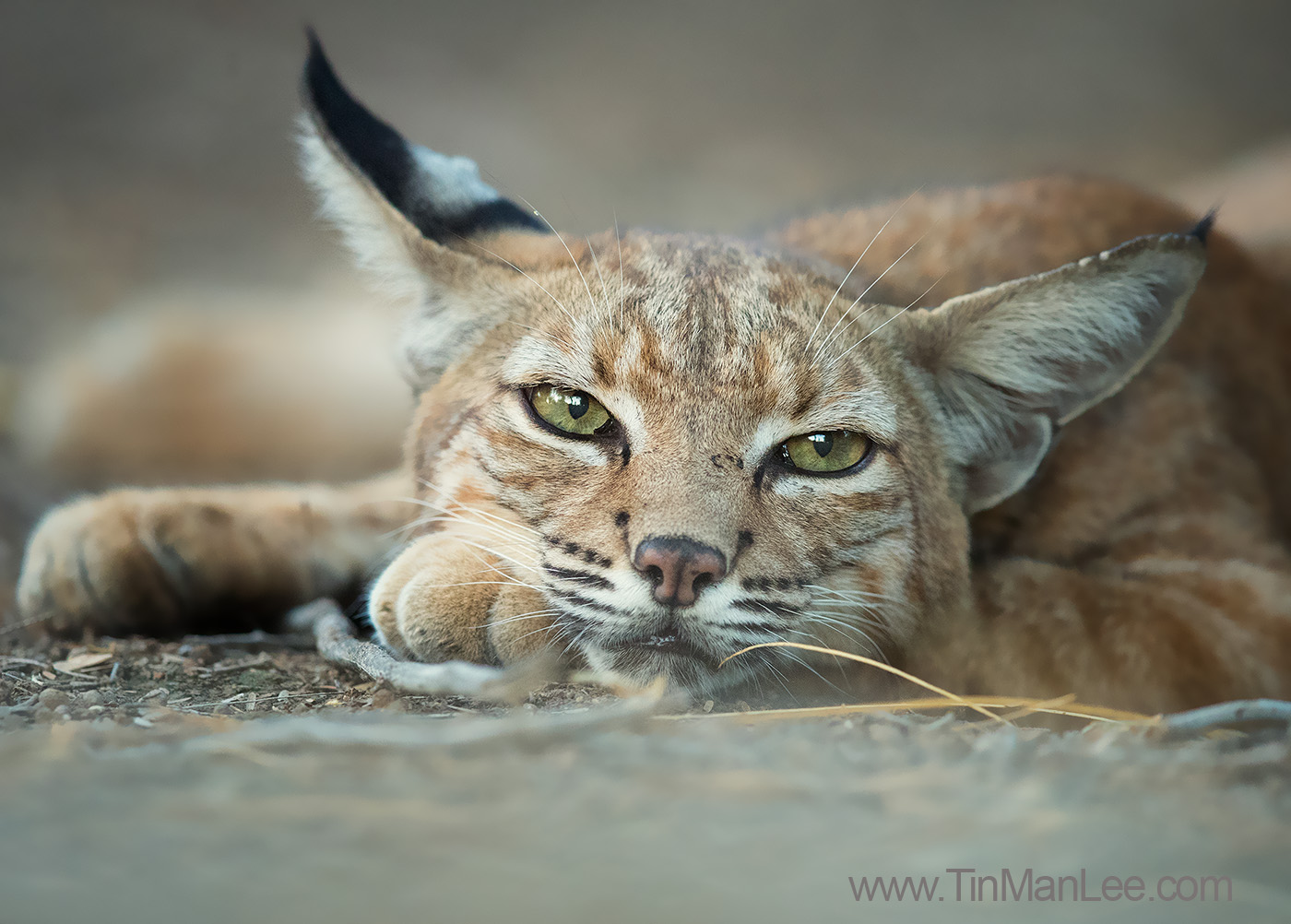
To photograph them really pushed the limits of the camera, the lens, my techniques, and my physical capabilities.
Today happens to be my birthday, so I think I should write a bit about photographing super-fast and elusive animals like the bobkitten.
But first, a bit of a digression.
I haven’t celebrated my birthday for quite a few years because of an incident.
I still remember that particular night like it was yesterday. I was all alone, slouching on the couch, motionless in the dimly lit living room, staring at the wall. I could barely function.
I had been struggling with injuries for a few months, and it had gotten to the point of being intolerable. Plus, I'd had a devastating breakup with my girlfriend just a few days before that.
Then, the news came. I was told that my beloved grandmother, who had brought me up, had just passed away unexpectedly.
I was ten thousand miles away, and couldn’t reach my parents or relatives. I didn’t get to say goodbye. I’d had a chance, and I'd screwed it up. I felt so disappointed and angry at myself.
And it all happened within the week of my birthday.
After that, I spent a lot of time in solitude.
My perspective changed. I wondered what it was all for, and what was I doing. I re-examined all my decisions. I learned things about myself that I didn’t know previously. I frantically read books, hoping to find an answer. And I did a lot of soul searching.
Photography became my savior. It brought me brief moments of joy whenever I was in the wilderness. In a way, nature healed me mentally, emotionally, and spiritually.
And I yearned to find a way to express my feelings through it, before I went crazy.
Again, I read lots of books, and re-examined all my previous photos. I studied visual art history, and the lives of numerous artists I admired. I tried to understand how they expressed their emotion through their art.
I started to feel their pain and struggles, and started to experiment with some new techniques.
Surprisingly, over the years I had a lot of wildlife encounters that I had never dreamed of.
One of the biggest joys was my encounter with a bobkitten.
Here are nine secrets I learned from photographing it, which can be applied to any super-fast, elusive wildlife.
(1) Difficult is Good:
We choose to go to the moon in this decade and do the other things, not because they are easy, but because they are hard.
- John F. Kennedy
That was the most painful photography experience I have ever had, both physically and mentally. But the pain reminded me to live in the moment.
I was in the open, in 115F heat, for hours. I actually counted---400 hours including, all the driving, walking, dashing, hiding, low-crawling, and waiting with a herniated disk plus a bulging disk in my lower back.
I guess I deserved the pain, because I pushed too much. But hey, I have been resting at home for over two months now. There is always time to recover.
How hot is 115F? One morning, I drank six liters of Smart Water within two hours. If I forgot to keep the water bottles in the shade, they would be heated up by the sun in no time, to a point where they would burn my tongue.
I had to constantly pour water onto my head to cool down.
At one point, I put my arm close to my nose, and it smelled like bacon.
I would take -50F any day.
But the point is, wildlife photography should always have a certain degree of difficulty, in order to be worthwhile.
Beauty pains, and when it pained most, I shot.
- Ernst Haas
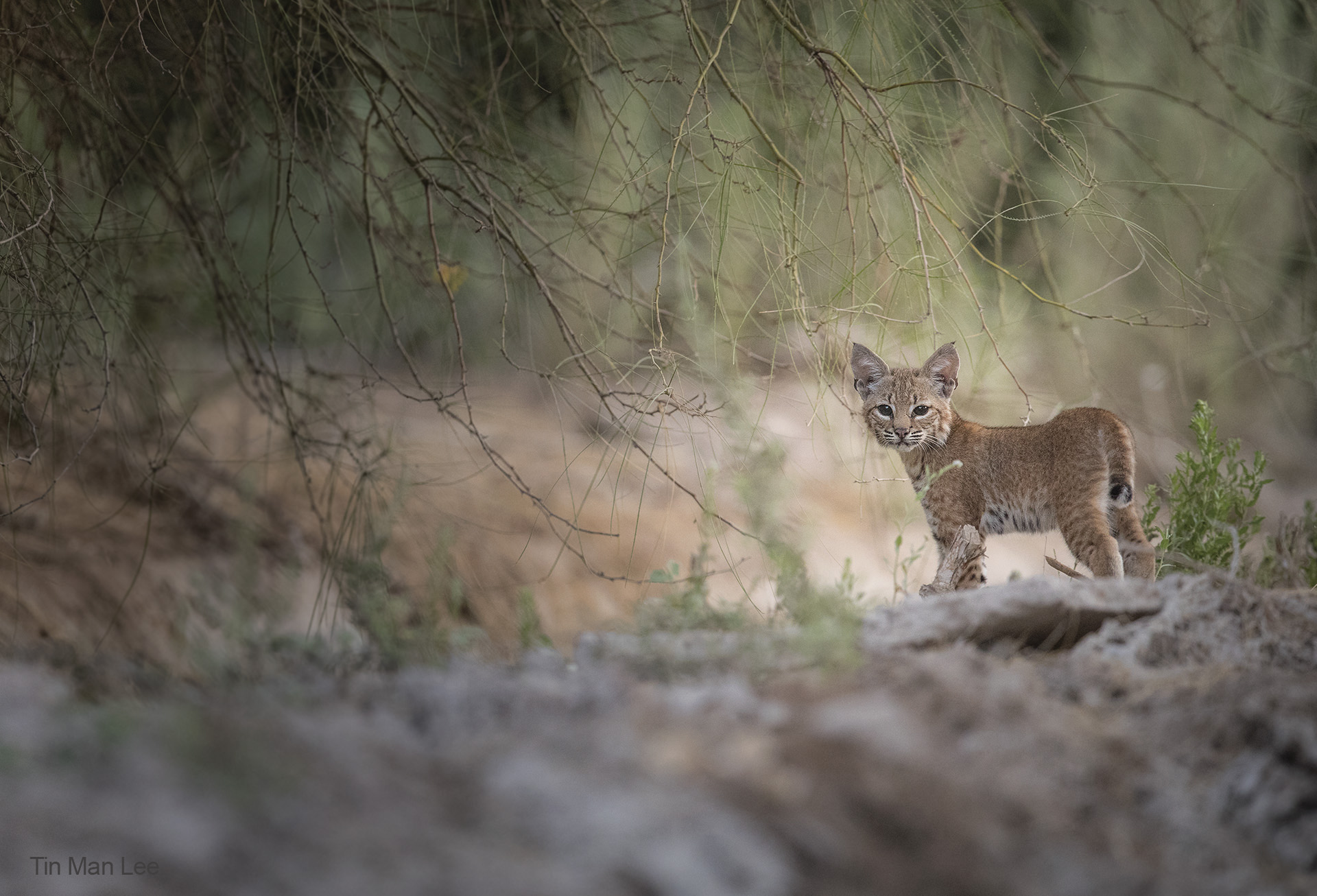
(2) The Mind Game
It’s funny how the mind works.
Waiting under the scorching heat, dust, and sandstorms made me wonder if hell looked anything like that.
I had to keep my mouth shut unless I wanted some protein, because swarms of mosquitoes would hover around me, at times blocking my vision. They tended to fly close to my ears, creating this thunderous, deafening sound that gave me migraine headaches.
I had to separate my mind from my body, otherwise I would go insane.
But the worst was my internal battle. Part of my brain would say, "They won’t show up. Go home. You are crazy." The other part would say, "Just one more minute."
The internal debate in my mind, together with the buzzing sound of the mosquitoes, composed a really bad symphony.
Then I would come to the realization: There's no where I'd rather be than right here.
It's the best place on earth right now.
Was I crazy? Maybe. But I was happy.
(3) You Need Extremely Smart Friends
Bobkittens are ultra-elusive. When they are small, they live in trees, hiding behind deep leaves. Their markings allow them to completely blend in. With their big, fluffy paws, they are completely silent.
And did I mention that they are extremely skittish? Any sound or sudden movement and you will never see them again. I would have given up completely, if it were not for a very smart friend.
We were able to piece together some random data, and were crazy enough to believe that we may have a shot.
Maybe it’s good to be completely ignorant about how difficult something is. Otherwise, we would not have attempted this project.
Ignorance either leads to epic failure or dumb luck.
We had lots of discussion and debate, came up with various strategies and game plans, failed at every single one of them, and spent hours and hours doing ridiculously inefficient searches, sometimes in the pitch-dark.
At times, we were spooked by the murderous, hair-raising sounds of barn owls, and other chilling noises from behind the tall grass, probably from hungry coyotes at night. I thought I was going to be eaten alive.
One morning, at about 4am, it was still dark, and my friend and I were walking through a field, when he suddenly elbowed me lightly. I stopped and turned around.
By squinting my eyes, and with the extremely faint ambient light of the night, I saw something I would never forget—the silhouette of two pairs of ears with little ear tuffs on a tree branch next to us.
My jaw dropped. I couldn’t stop myself from grabbing and pinching my friend’s arm in out-of-control excitement. I think my fingernails may have broken his skin.
Holy shit? Was that real?
When we looked again, they were gone. Both of us were frozen, just standing there, speechless for quite a few minutes.
Later, we came to a conclusion—it seemed that they had numerous tree spots to sleep in at night, and they kept changing the locations frequently, sometimes moving miles away.
And cats being cats, you could never predict where they are going to be.
We later made another great friend who was also very smart.
Together with two extremely smart friends, life became a lot easier for a dumb person like me.
(4) Light Gear Is Essential
With the speed and elusiveness of the bobkitten, carrying a tripod is---stupid. You shouldn’t even carry a backpack.
Everything should be ready, because you have literally one second from the encounter to when they disappear.
I had one knee pad on my right knee, a waist belt to carry a big bottle of water, and the 600mm f/4 lens and 1.4x teleconverter on my shoulder, because I needed the longest reach possible with the best sharpness.
I used a heavy-duty water-proof hiking boots in case I stepped on thorns or dried vegetation with sharp spines. It was like walking on a seabed with sea urchins.
One time, I forgot to bring the boots, and the thorns penetrated through the sole of my running shoe all the way. It was like taking a flu shot in my foot, only five times worse. I jumped three feet high. Ouch.
Equipped like this, I’m ready to spring, slide, and “crash-land” on the field of thorns with my right knee, put my left elbow on my left knee as support for the lens, and shoot away.
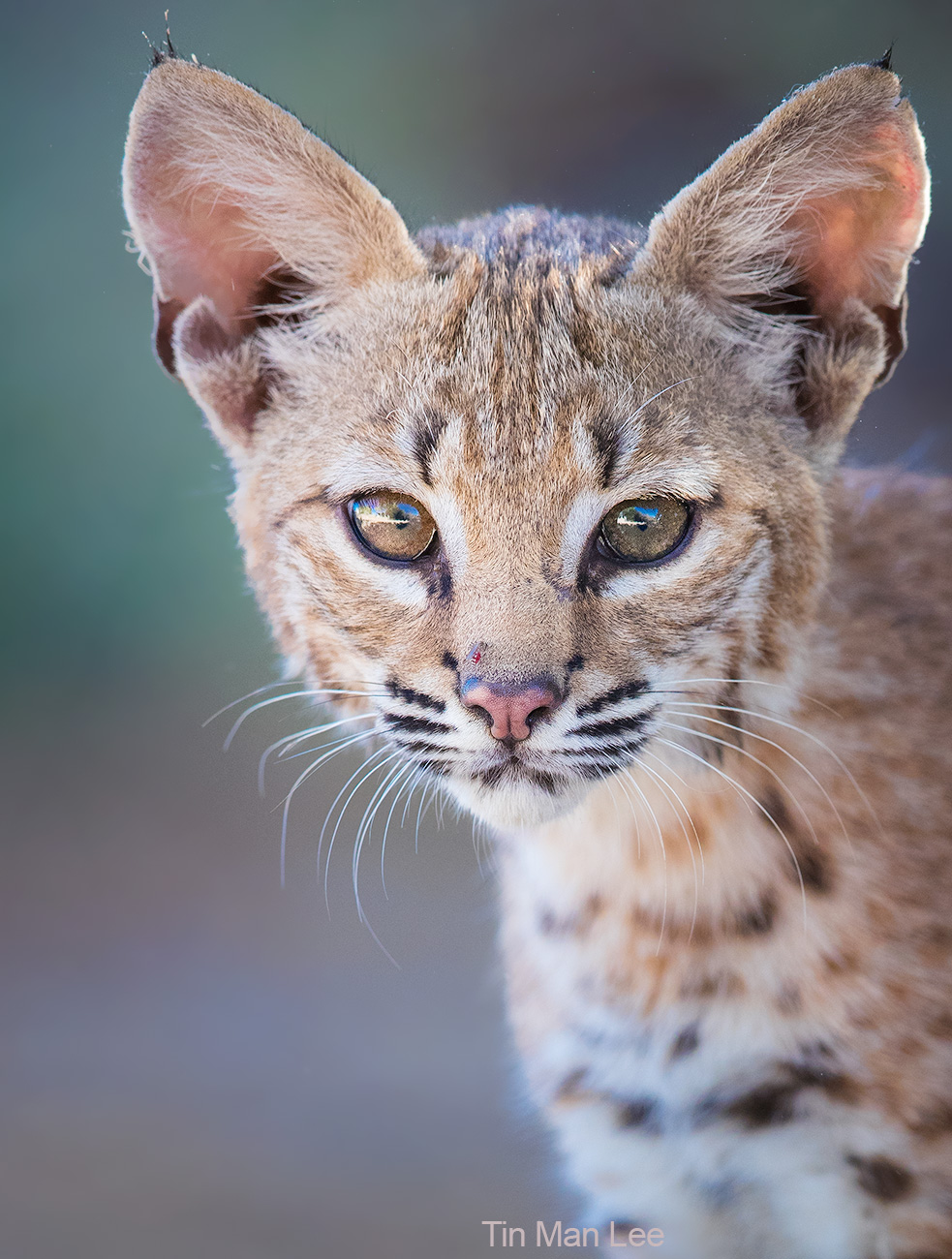
(5) Auto ISO
When you only have one second to get ready, you won't have time to adjust your f-stop and shutter speed on the go.
If you try, you will miss the shot.
You have to use auto ISO. If you don’t know what that is, you can listen to my recent webinar.
You have to pre-set your f-stop to the biggest aperture---in this case, f/5.6 with the 1.4 teleconverter, and 1/1600s, for fast action.
Bobkittens mostly show up in extremely low light, so the ISO should be super high---at times as high as 25,600.
You have to be fully aware of the ISO at all time.
If the bobkittens stay still for half a second, you can dial the shutter speed down to 1/400s, to a lower ISO for better image quality (if the ISO goes beyond the 10,000 range with a higher shutter speed).
But changing your routine in the heat of action is not for the faint of heart, because your brain likely won’t function properly in such an encounter, and you may end up making disastrous mistakes.
(6) More on Exposure and Composition
There are two things to look for:
The first one is to IMMEDIATELY “unsee” the bobkitten and look for a decent background for your image (no matter how much you want to take another look at her).
This is because background is SUPER critical. It is a sin to take a pic with bad background and ruin a once-in-a-lifetime opportunity.
To me, it is an insult to the wild animal if you don't try to get the best background possible.
With so many distractions such as twigs, branches, and tall grass in their habitat, you have to immediately scan the whole area, move to the perfect spot, and plan your composition and story in real time.
My thumb was always moving the camera joystick to change focus points for composition. But then, sometimes I just gave up and used the center focus point because it was impossible to keep up with the bobkittens. But I really don’t like cropping. I need pixels for large print, and it’s also a personal challenge for me to shoot in a way that doesn't require a crop.
And the second thing to be aware of is that the background is not too bright or too dark. Otherwise, your exposure will be screwed if you don’t do exposure compensation. I have learned many painful lessons about this.
I tend to use evaluative metering (matrix metering for Nikon), and add 2/3 stop to “expose to the right.”
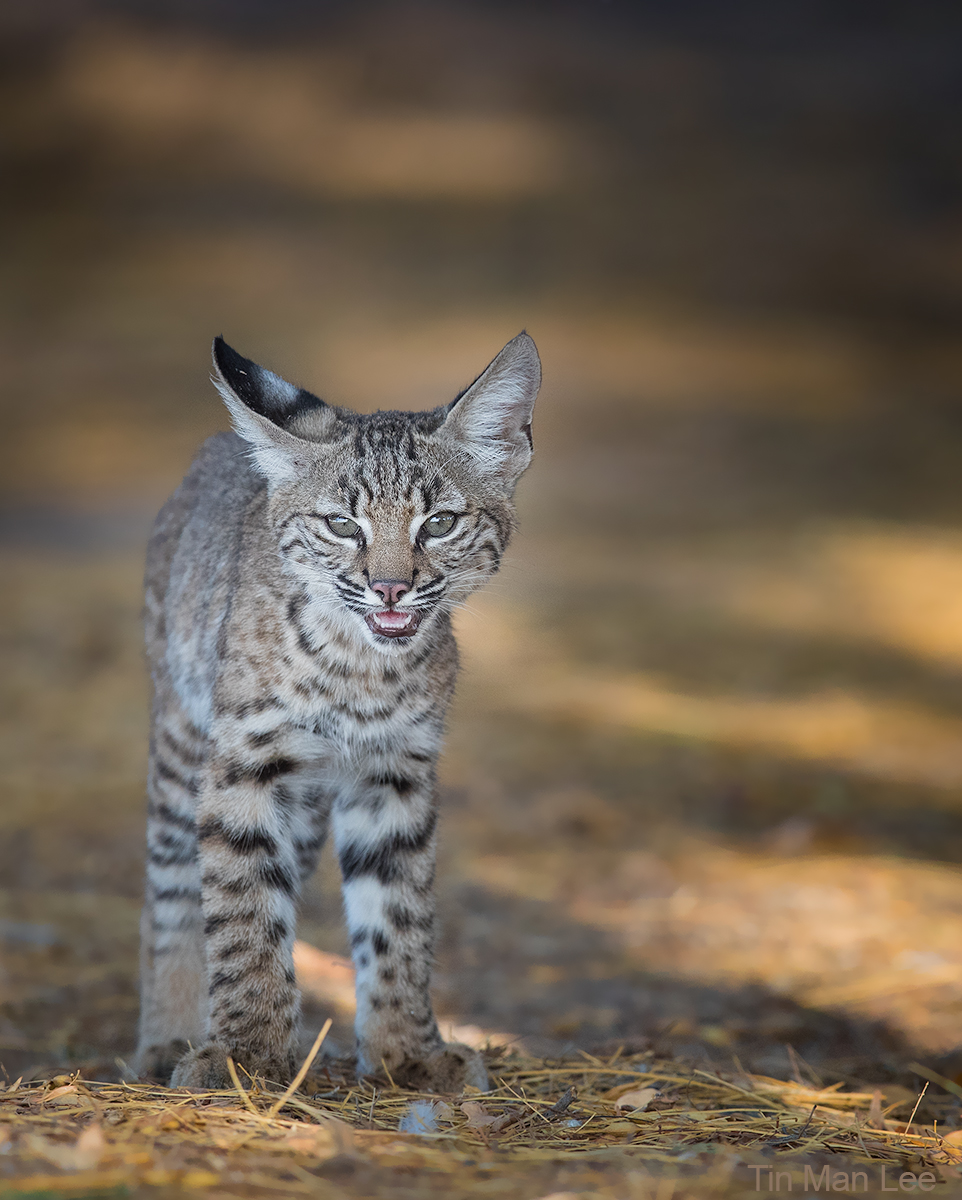
(7) The Art of Super Quick Focus
In my boot camp, I created several exercises for my students to practice quick focus every day at home.
Think about it.
Why do bobcats have markings on their fur?
For beautiful photography?
Wrong!
Evolution has helped them to blend into their environment, especially in low light and a habitat with trees, tall grass, and branches.
I didn’t quite understand this at first. I thought my camera sucked, or that I sucked. I just couldn’t lock focus. The focus kept on hunting back and forth, even though the bobkitten looked so clear in my viewfinder.
It’s mind-blowing how they can trick the machine! You have to be able to raise your lens and aim right at their eyes, and then hope for the best.
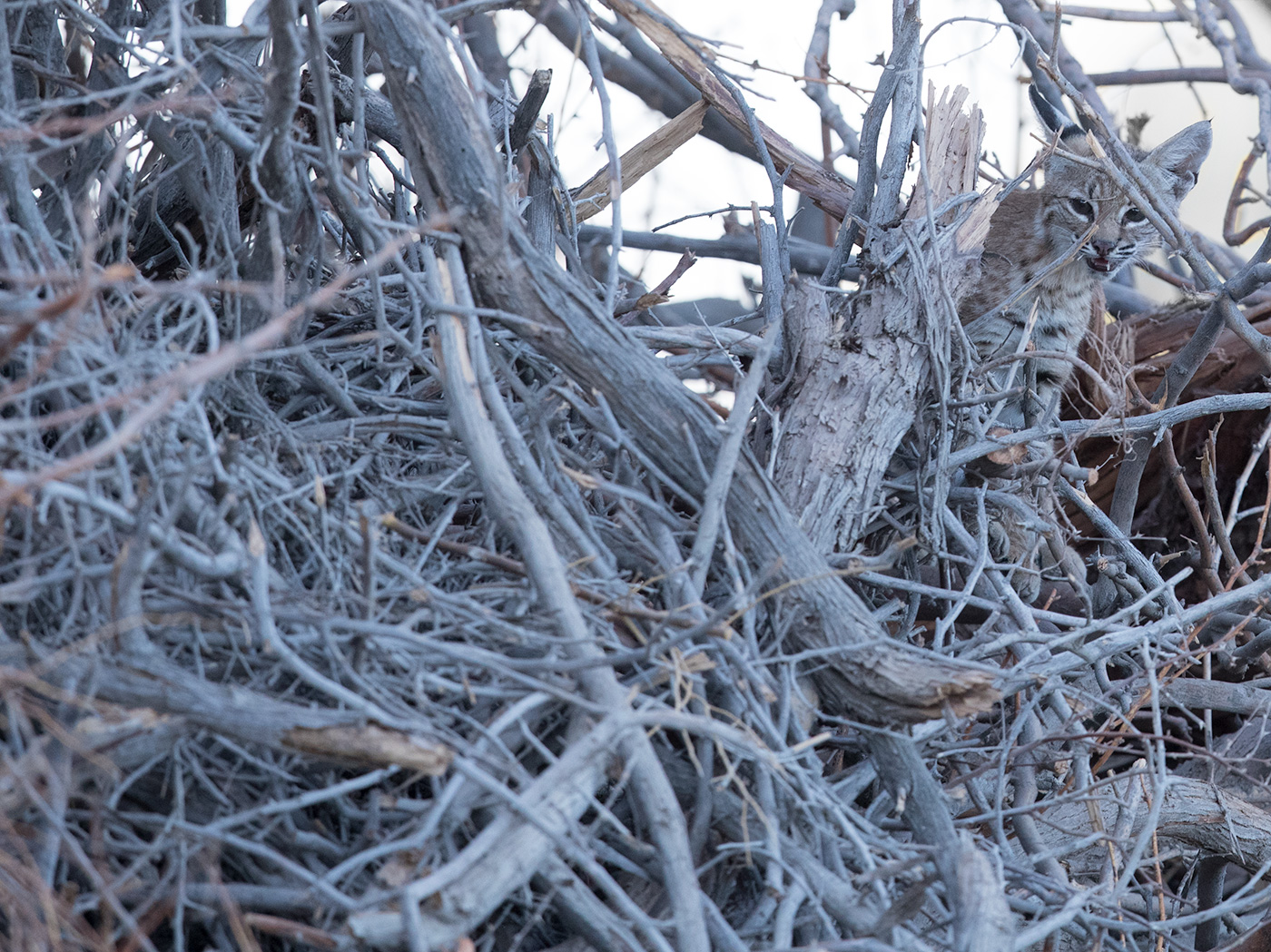
If you focus on their nose, with f/5.6, their eyes will be out of focus. I learned my lesson here, too. And we don’t have the luxury to go higher than 5.6 with the low light.
So you have to practice with your index finger or your thumb (if you use rear focusing), to keep half-pressing and releasing the auto focus button if the AF keeps on hunting, and pray that the camera can acquire focus before the bobkitten disappears.
(8) Don’t Think. Feel.
This is a quote from Bruce Lee. Bobkittens are so quick that you can never see clearly or predict their next moves from looking through the viewfinder.
So you really have to rely on your instinct to predict if anything is going to happen. Once you feel it is right, press the shutter and blast off a lot of frames.
Understanding animal behavior helps, but more importantly, you just have to listen to your heart. We all can feel it if we use our senses and focus.
I have to admit that I felt helpless most of the time, as if I were incapable of getting shots. But sometimes I was surprised by what I got.
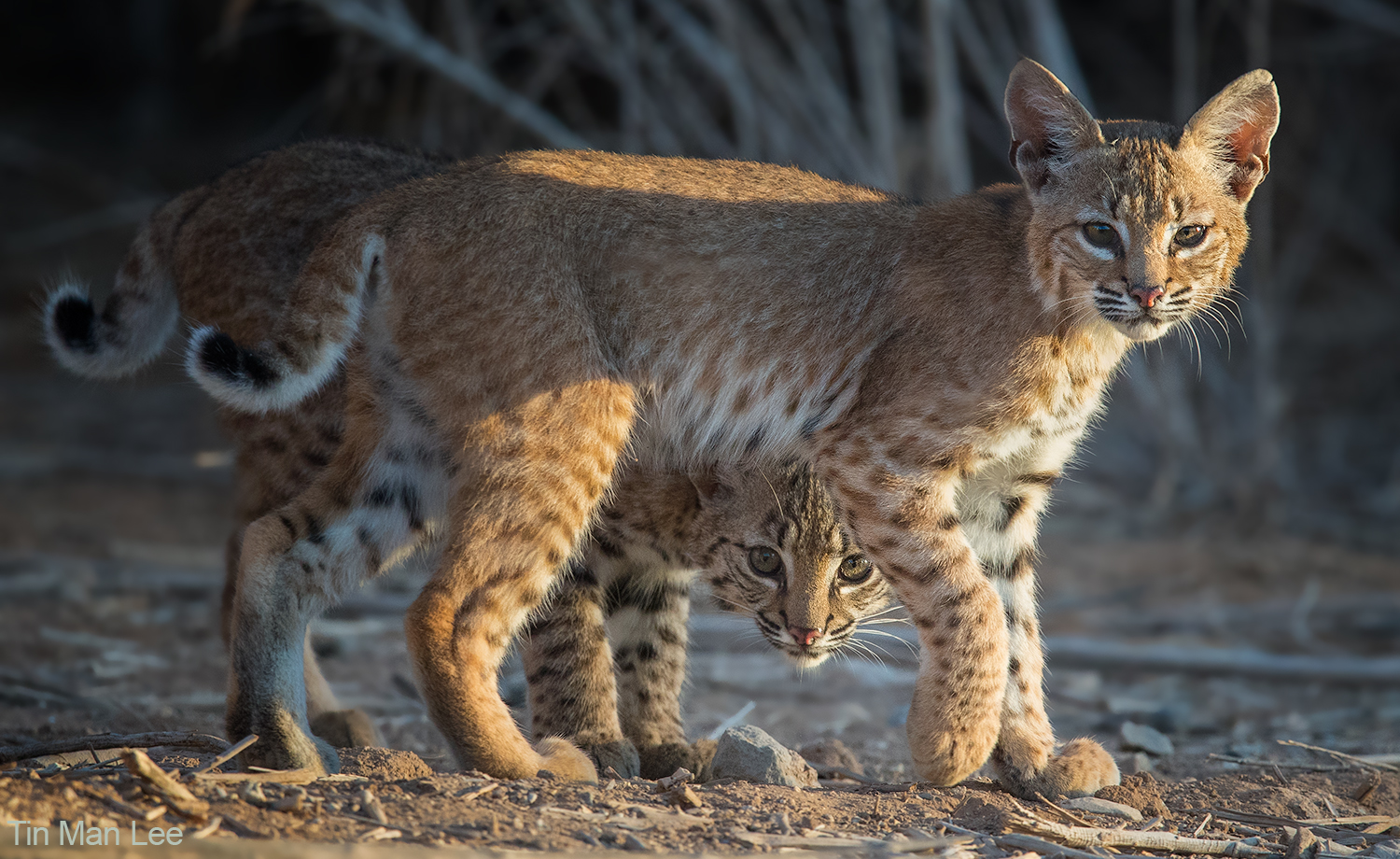
I wouldn't have gotten this shot if I didn't use my instinct and press the shutter right before the two bobkittens walked by me. They were so curious that I expected the kitten in the back would peek at me. I just didn't expect she'd peek at me this way.
Did I mention you have one second? Maybe only 1/5s to leap and slide into position while checking background. Another 1/5s to aim and compose by moving your focus point. Less than a second to check exposure. Only 1/5s to check the ISO and make sure it’s not too high and ruining the pic. And then, if you are able to do all of that, you have time for four or five shots if you have a camera that can shoot 14 frames per second.
(9) Emotion, Emotion, Emotion
Bobkittens are delicate yet strong, skittish yet curious, mysterious yet loving. In a world where the hunting of bobcats is still allowed in some states, they are struggling. I wanted to convey that. I looked for the composition, the eye contact, the lines and shapes, the triangles, the interaction, the moment that helped me to express such strength and uncertainty. And after countless attempts, here’s my favorite one.
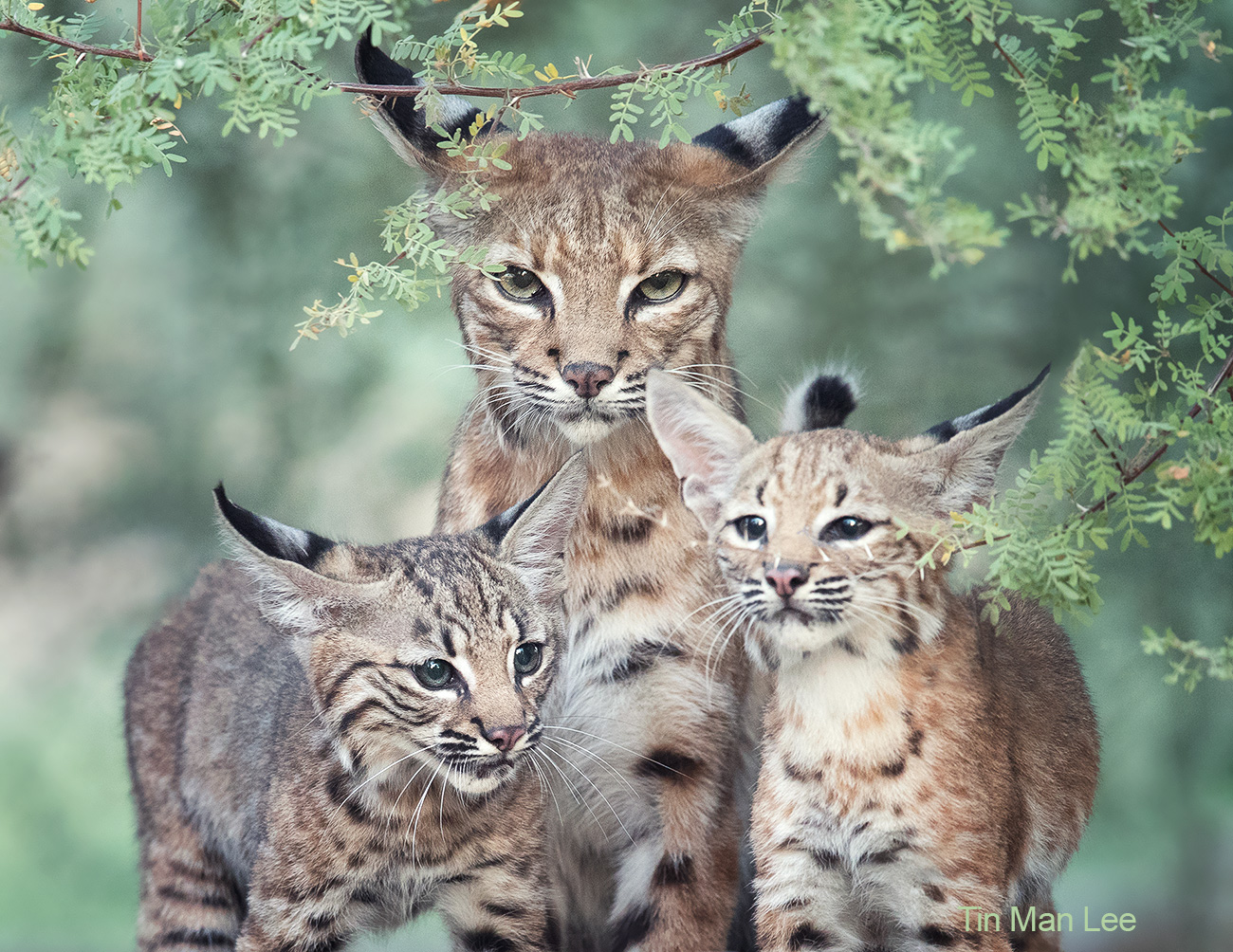
This is very likely the most beautiful thing I've ever seen in my viewfinder. It happened so quickly, suddenly, and unexpectedly that I never even had a chance to adjust my camera settings. Something showed up on my peripheral vision, and I thought, "What's that?" I had no idea. It seemed like three pairs of eyes. Adrenaline rush. Hyperventilating. Sweat in my eyes. I swung my 600mm lens up, focus hunting back and forth. There was super low light, and they blended in so well. I kept pressing and releasing the focus, hoping it would engage. Happiness and pain filled my heart. I knew the opportunity was fleeting, yet I had no control. I wanted to put the camera down and soak it all in, as it would likely never happen again in my life. But I just couldn't let it go. In a frenzy, I was barely able to fire off a few shots, with the viewfinder still a blur. Within a blink of an eye, they all disappeared, not even leaving a trace. They must have been teleporting! I looked at my friend kneeling next to me, and we were in shock. What had just happened? I had to look back at the camera LCD to find out. Canon 1DX Mark II, Canon 600mm f/4 II, 1.4x teleconverter, f/5.6, 1/200s, ISO 3200, handheld.
(If you look closely at the markings in the photo of the bobkittens above this photo, you will see that they were the same two siblings. They were just growing up fast.)
Today:
So, while healing my back at home, I’m going to give myself a birthday present by ordering an acrylic print of this favorite photo of mine---the mother bobcat with two bobkittens.
I'm going to give a free webinar in late July on how to evoke emotion in wildlife photography. Please sign up for my newsletter to receive info for the webinar.
I also have a video tutorial on my workflow in Adobe Lightroom and Photoshop. You can order it here.
25 limited edition prints are for sales.
To purchase a 20 by 15 inch print, click HERE
To purchase a 36 by 28 inch print, click HERE


Thanks for sharing. These bobkitten photos are spectacular!! I love your narrative-it makes the pictures come alive. I had the supreme pleasure of spending time with the Madison River bobcat a couple of winters ago-such a beautiful cat. I’m hoping for complete recovery of your back.
Great story Tin Man! I have cats In my area and have seen adults on a few occasions, but never kittens and zero opportunity for snaps. I did, just the other day witness a ruffed grouse with a few chicks which was a first for me! I managed a few clicks of chicks, but no emotion as they were separate from mom and like the bob kittens were there for a second or two and gone!
Absolutely beautiful bobcat kittens! Amazing photography! Love your stories too.
Hoping you are recovering and had a very Happy Birthday.
Looking forward to the next webinar in July.
Thank you TinMan,for all you share with us wanna be wildlife photographers.
Thank you for your beautiful photos – truly works of art, as always.
And thank you for the education and inspiration. I learn something from every article.
Autofocus seems to have been a problem with the bobkittens. I wonder why you use the camera’s autofocus, rather than manually focusing.
Whether using manual or auto, I lock focus using “back button focus” (Nikon). Then I can change settings and composition without worrying about re-focusing until I, or my subject, moves.
Once I learned how to use it, I can’t do without it.
I assume Canon has a similar tool.
I hope your back problems are healing. It can take quite a long time. You must be as patient with your back as you are stalking bobkittens.
Warmest regards,
Hi Stu, thanks for your comment and kind words! Yes, Canon has back focus too. I should try it some time. Just been doing front focus for many years and it’s hard to switch. As for manual focus, not too easy handholding the 600 and doing the adjustment, especially when they move all the time. Much appreciated!
TML your story-telling skills rival your photography. Great post. BTW thanks for the steer on Mountain Goats in CO. Shiela and I made it out there at the end of June and your guidance was right on! Going through images now but we are happy. Belated happy birthday. Good luck with your recovery. Take care.
Thanks for the kind words, Dave. Back is getting better. Numbness on right foot is a lot reduced. Can’t wait to see your mountain goat pics!!!
Awesome pictures of the bobkitten! It had to be worth it. Happy Birthday! Hope your back gets better.
Love all your pictures. The bobkittens are amazing. I like the one resting on it’s paw. It looks like it just woke up for a nap or is getting ready for one. Your writing is such a joy to read. You are inspirational! I love the fighting bear picture you sent me. It is hanging on my living room wall with a light on it. I hope that your back problems are reduced to the level that you can do your wonderful photography as you desire. By the way, we have the same birthday month. I turn double 7 (77) this week.
I did go to the National Senior Games last month. In my age group I placed approximately 11th out of 34. It is hard to tell the exact placement the way the publish the information. My only losses were to the bronze medal winner and the fourth place finisher. I wish your back was in as good a shape as mine. Keep photographing!!!!
Hi Ed, Happy Birthday to you too! Double 7 is definitely something to celebrate! I’m glad to hear that you like the bear fighting pic and it is well taken care of 🙂 Huge congrats on the great result of the National Senior Games, with that technique I am sure its perfect for BIF!
I’m also a big fan of wild felines.
Great article and amazing pictures!
You earned them…
Congratulations!
A.